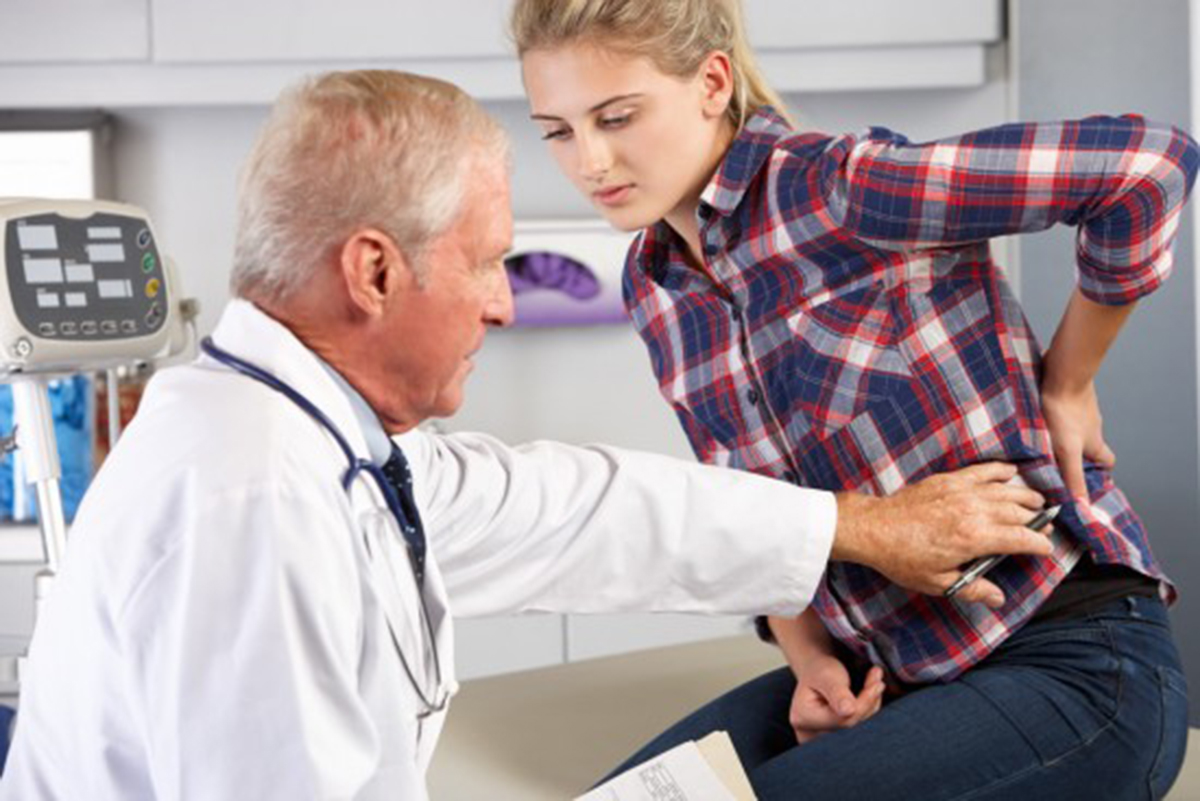Table of Contents
Most back pain gradually improves with home treatment and self-care. If not, it is recommended to see a doctor. You should visit the doctor immediately if the pain is:
- Constant or intense, especially when lying down or at night
- Spreads down one or both legs
- Causes weakness, numbness or tingling in one or both legs
- Causes new bowel or bladder problems
- Is associated with abdominal pain or pulsation, or fever
- Follows a fall, blow to your back or other injury
- Is accompanied by unexplained weight loss

Diagnosis of back pain
None of these diagnostic tools is generally necessary because simple physical examination should be sufficient to make a diagnosis. If there is reason to suspect that patient has a tumor, fracture, infection or other condition that may be causing back pain, the doctor should order one or more tests:
X-ray
This is very good diagnostic tool because these X-ray images show the alignment of bones and whether a patient has degenerative joint disease or broken bones.
Magnetic resonance imaging (MRI) or computerized tomography (CT) scans
These scans can generate images that may reveal herniated disks or problems with bones, muscles, tissue, tendons, nerves, ligaments and blood vessels.
Bone scan
In rare cases, the doctor may use a bone scan to look for bone tumors or compression fractures caused by osteoporosis.
Nerve studies (electromyography, or EMG)
This test measures the electrical impulses produced by the nerves and the responses of muscles.
Risk factors for developing back pain
Certain groups of people have higher risk of developing back pain. They include people who
- Have a job which requires heavy lifting, lots of bending and twisting, or whole body vibration
- Have bad posture
- Are pregnant
- Are over age 30
- Smoke, don't exercise, or are overweight
- Have arthritis or osteoporosis
- Have a low pain threshold
- Feel stressed or depressed
Treatment of back pain
Back pain usually improves on its own, or with home treatment, within a few weeks, unless there's a serious medical condition causing it.
Moving a lot
It is proven that prolonged bed rest isn't a good idea for back pain. Light activity speeds up healing and recovery.
Apply cold, then heat
Sources of heat and cold can soothe sore and inflamed muscles and this kind of treatment is widely used. Patient should use cold treatment first with bags of ice. After spasms and acute pain subside, patient can apply heat from a heating pad to help loosen tight muscles.
Use pain relievers
Several studies have came to the conclusion that some nonsteroidal anti-inflammatory drugs such as ibuprofen (advil, Motrin, Aspirin, others) and other medications such as acetaminophen (tylenol, others) may help control pain, swelling, and stiffness.
Support brace or corset
Braces, corsets or back belts are available over the counter at pharmacies and medical supply stores. They really can provide warmth, comfort and a degree of support to your back.
Acupuncture
Some people with low pack pain report that acupuncture helps relieve their symptoms but this has yet to be proven. During this procedure the practitioner inserts steel needles into the skin at specific points on the body which should stimulate central nervous system to release the body's natural pain-relieving endorphins.
Prevention of low back pain
Exercises
Exercises are important for preventing future back pain. Through exercise patient can:
- Improve his posture
- Strengthen his back and improve flexibility
- Lose weight
To avoid the back pain you should also try to:
- Avoid falls
- Avoid standing for long periods of time.
Quit smoking
Smokers have diminished oxygen levels in their spinal tissues, which can hinder the healing process.
Maintain a healthy weight
Being overweight puts strain on patient’s back muscles. If someone is overweight, trimming down can prevent back pain.
When you have to lift some heavy object, try using the following tips to avoid the back pain::
- If an object is too heavy or awkward, get help.
- Spread your feet apart to give a wide base of support.
- Stand as close to the object you are lifting as possible.
- Bend at your knees, not at your waist.
- Tighten your stomach muscles as you lift the object up or lower it down.
- Hold the object as close to your body as you can.
- Lift using your leg muscles.
- www.ninds.nih.gov
- http://en.wikipedia.org/wiki/Back_pain
- Photo by shutterstock.com

